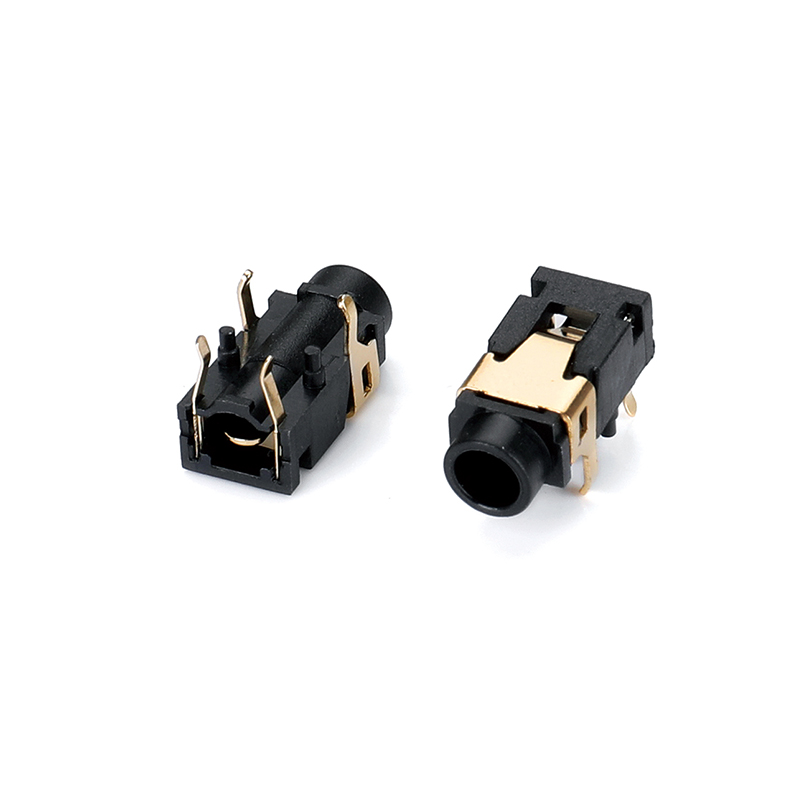A comprehensive analysis of the size standards of headphone jack connectors: 2.5mm, 3.5mm and 6.35mm each have their own advantages
发布时间:2025-07-28作者:Shenzhen BBJ technology co., LTD点击:135
A comprehensive analysis of the size standards of headphone jack connectors: 2.5mm, 3.5mm and 6.35mm each have their own advantages
As an indispensable component of audio equipment, headphone jack connectors not only affect the quality of sound transmission, but also affect the compatibility of the equipment and user experience. Common headphone jack connectors include three standards: 2.5mm, 3.5mm and 6.35mm, and each interface corresponds to a specific application scenario and technical specifications. This article will comprehensively analyze the technical differences and development trends of these three headphone jack connectors from the perspectives of structure, function, and adaptation field, to help consumers and engineers better choose the appropriate interface standard.
The 3.5mm version of the headphone jack connector is undoubtedly the most widely used one at present, especially in consumer electronic products such as mobile phones, notebooks, MP3 players and car audio. It plays a mainstream role. Its standard three-band (TRS) or four-band (TRRS) design not only supports stereo output, but also is compatible with microphone input and volume control functions, which is a balanced choice of comprehensive performance and portability.
The 6.35mm version of the headphone jack connector is often used in high-end audio equipment, professional recording studios and stage audio systems. Because of its large physical size, wider signal contact area, better anti-interference ability and more stable sound quality performance, it is the first choice of audio engineers, music producers and enthusiasts. Many high-impedance headphones also use 6.35mm headphone interface connectors to ensure the best driving performance and sound quality restoration.

Although the 2.5mm specification of the headphone interface connector is no longer mainstream in the modern consumer market, it still has a place in some devices with extremely high volume requirements. For example, it can still be seen in some wireless walkie-talkies, small recording devices, and old smartphones. Compared with 3.5mm, the 2.5mm interface is more compact and suitable for lightweight and portable design requirements, but it is slightly inferior in audio quality and interface stability.
In actual applications, different specifications of headphone interface connectors are not completely interoperable and need to be adapted through adapters or converters. This also causes some users to encounter problems such as signal attenuation and poor contact in actual use, especially in industrial and medical equipment that is frequently plugged in and out for a long time, stability is particularly important. A well-known medical terminal equipment manufacturer once said that after they upgraded from the traditional 2.5mm interface to the industrial-grade 3.5mm headphone interface connector, the system failure rate dropped by nearly 40%, which not only improved the user experience, but also saved after-sales costs.
The future development of headphone interface connectors is gradually evolving towards high integration, high durability and digitalization. With the popularization of USB-C and Bluetooth technology, traditional headphone interface connectors are facing the trend of being replaced. However, in scenarios with extremely high sound quality requirements, such as recording studios, monitoring systems, industrial call equipment, etc., physical headphone interface connectors still maintain an irreplaceable position with their advantages such as low latency and strong anti-interference.
The selection of headphone interface connectors should be comprehensively evaluated based on the actual usage scenario, equipment specifications and required audio quality. Whether it is a home audio-visual system or an industrial embedded device, a reasonable selection will greatly improve the overall audio transmission stability and user satisfaction.
The headphone interface connector is not only a simple audio transmission medium, but also carries multiple tasks of sound quality, safety and compatibility. In the ever-changing technological trends, understanding and mastering the standards and characteristics of different headphone interface connectors is crucial for product design and consumer decisions.